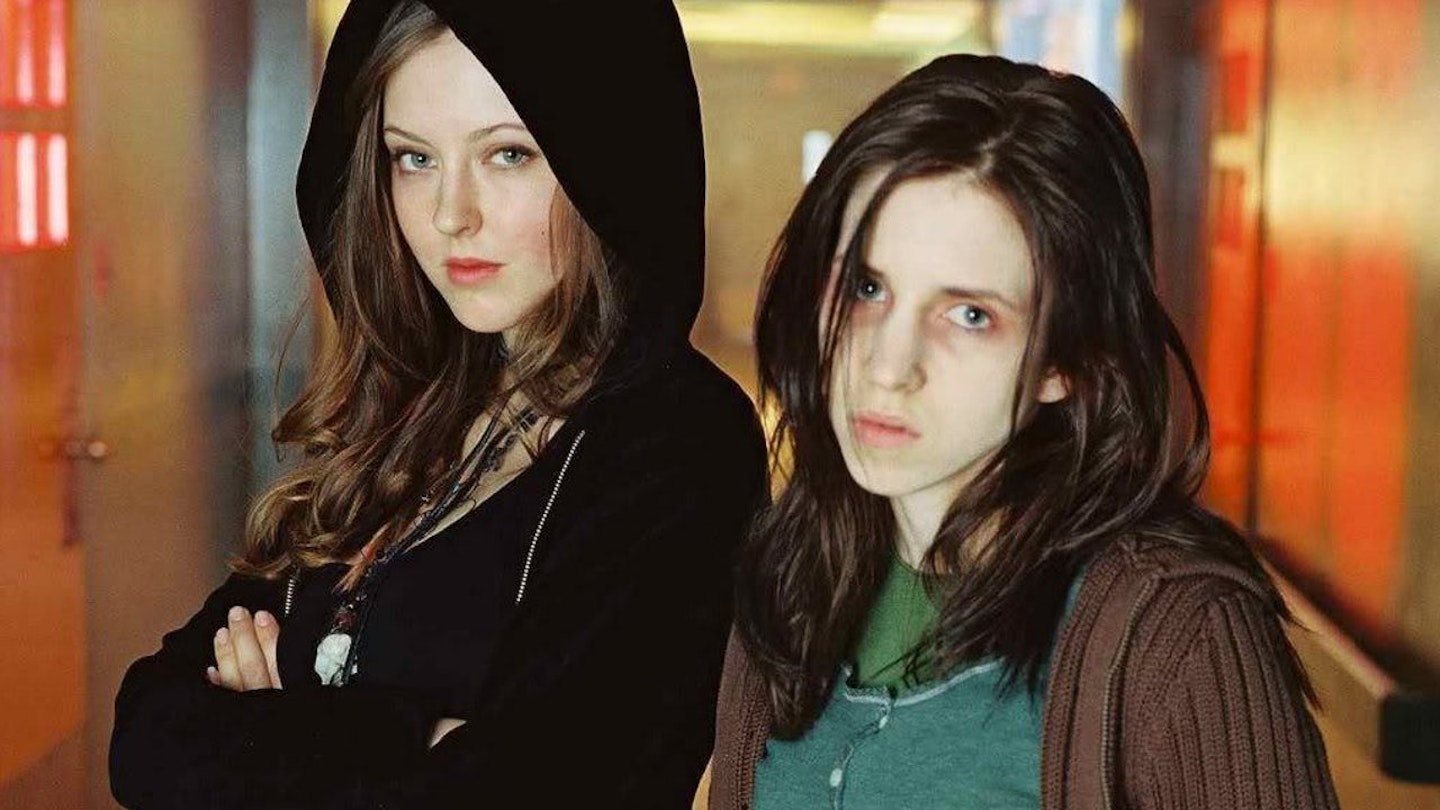The problem with werewolf films is that they almost always seem to be structured around showing off the special effects, from the yak hair dissolves of The Wolf Man, through the rubberwork of An American Werewolf In London, to the CGI of An American Werewolf In Paris. This low-budget entry doesn't quite take the Cat People approach of keeping its beast entirely off-screen, but it does work harder at the character stuff than the monster-making.
Breaking with the familiar periodic full moon transformation mythology, Ginger Snaps plays out a scenario more like The Fly, whereby the unfortunate Ginger gradually (and perhaps permanently) shape-shifts into a big dog form. Along the way, symptoms develop, such as sharper teeth and nails, increased (and embarrassing) hairiness, becoming white streaks in her mane, and hormone-driven instincts that tear her between desires for animalistic sex and bloody carnage.
Recently, under the influence of Buffy The Vampire Slayer, teen-themed horror movies have been tidy satires, fliply allegorising teenage problems in hokey Gothic leftovers.
Ginger Snaps is more toothsome, as the supernatural situation serves to throw into crisis the relationship between the normally strange Fitzgerald sisters: the older and marginally more confident incipient babe Ginger and the glowering, sulky, sensitive Brigitte. The kind of girls who stage multiple mock suicides as a school project, they have sworn to be dead or out of town by the age of 16, thus Brigitte feels as threatened by Ginger's sudden interest in boys as by her wolf-like manifestations.
Karen Walton's sharp screenplay is especially strong in the family scenes, allowing performances of Heavenly Creatures intensity from the young leads, and a very funny turn from Mimi Rogers as their perkily callous Mom. A regulation monster of the kind seen in too many Howling sequels makes an unavoidable appearance in the finale, but director John Fawcett works hard to produce a truly emotional climax.
